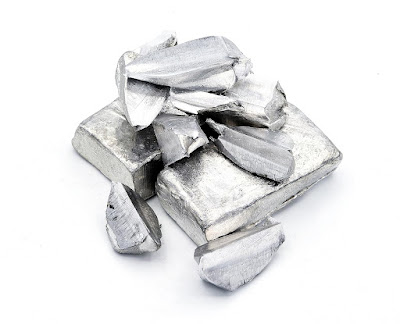Indium, a lesser-known metal in the periodic table, holds an important place in various industries due to its unique properties and applications. Indium plays a vital role in enabling technological advancements in various fields, from electronics to energy production. In this article, we highlight the diverse uses of indium and its importance in modern society.
1. Electronics:
The most notable application of indium is in the electronics industry. It is widely used in the production of liquid crystal displays (LCDs), where it forms a transparent conductive film known as indium tin oxide (ITO). This film is essential for touchscreens, flat-panel displays, and thin-film solar cells because of its high electrical conductivity and optical transparency. Without indium, the vibrant screens of smartphones, tablets and TVs would not be possible.
2. Solar Energy:
In the search for renewable energy sources, indium plays an important role in photovoltaic technology. Thin-film solar cells consist of layers of indium gallium arsenide (InGaAs) or copper indium gallium selenide (CIGS), which efficiently convert sunlight into electricity. These solar cells offer flexibility and higher efficiency than traditional silicon-based solar panels, making them suitable for a variety of applications including portable electronics and building-integrated photovoltaics.
3. Semiconductor:
Indium finds its way into semiconductor manufacturing processes, where it is used in the production of high-performance transistors, diodes, and other electronic components. Indium antimonide (InSb) and indium phosphide (InP) are semiconductor materials known for their unique electrical properties, making them suitable for applications in infrared detectors, lasers, and optoelectronic devices.
4. Solder and alloy:
Indium's low melting point and ability to join a wide range of materials make it an ideal component in soldering alloys. Indium-based solders are commonly used in electronic assembly, providing reliable connections without damaging delicate components. Additionally, indium is alloyed with other metals such as gallium, tin, and bismuth to create materials with specific properties for various applications, including thermal interface materials and fusible alloys.
5. Medical Imaging:
In medicine, indium has applications in diagnostic imaging procedures. Indium-111, a radioactive isotope of indium, is used in nuclear medicine for imaging white blood cells, detecting infections, and detecting tumors. Its ability to emit gamma radiation makes it valuable for single-photon emission computed tomography (SPECT) scans, which aid in the diagnosis and monitoring of various medical conditions.
6. Aerospace and Defense:
The unique properties of indium also make it indispensable in aerospace and defense technologies. Due to its low thermal expansion coefficient and excellent ductility at low temperatures it is used in high-performance electronics, thermal management systems, and cryogenic applications. Indium seals are used in vacuum systems and cryogenic equipment to ensure reliable performance in extreme environments.
7. Research & Development:
Beyond commercial applications, indium remains essential in scientific research and development. It serves as a catalyst in organic synthesis, a component in materials science studies, and a dopant in semiconductor research. Its versatile nature and compatibility with various materials make it a valuable tool for advancing scientific knowledge and developing innovative technologies.
Indium's versatility and unique properties have established it as an important element in modern technology. From enhancing the visual experience of electronic displays to facilitating the transition towards renewable energy sources, indium's contribution to various industries is undeniable. As technology continues to advance, demand for indium is likely to increase, highlighting its importance in shaping the future of innovation and sustainability.

Comments
Post a Comment